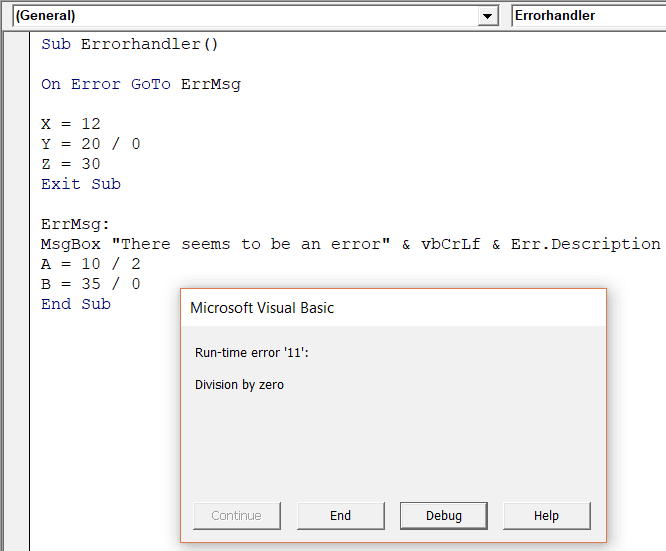

Unfortunately, the error messages are often too vague (e.g.
Excel vba on error goto resume code#
Runtime errors are handled by the intrinsic Err object, which displays a standard error message box: number, message and source, along with the option to enter the code editor in debug mode or to terminate the program. On Error GoTo 0 is the default mode in VBA i.e. The code below this line is considered the error handler for the procedure.Ĭlears the current error handling and sets it to nothing, which allows you to create another (i.e.

It tells VBA to jump to the line in the procedure identified by when a runtime error occurs. This statement is used to specify an error handler for a procedure. It is not a substitute for writing code correctly the first time. It tells VBA to ignore any errors that occur and continue with the next line of code until you tell it to do otherwise. This statement is both very dalgerous and very useful at the same time. When a runtime error occurs, a standard message box is displayed with error details, and gives the user the option to enter the code in debug mode or to terminate the running VBA program. It simply tells Office to go back to the built-in Err object. In other words, an “enabled” error handler is one that is turned on by an On Error statement.ĭisables any previous error handling (or trapping). The heart of err handling in VBA is the On Error statement. As the code writer, you should make as many (reasonable) checks as possible during initialization to ensure that run time errors do not occur later. If yes, then you write some additional code to correct the error or to terminate the running program in some controlled way – these are called handled errors.


 0 kommentar(er)
0 kommentar(er)
